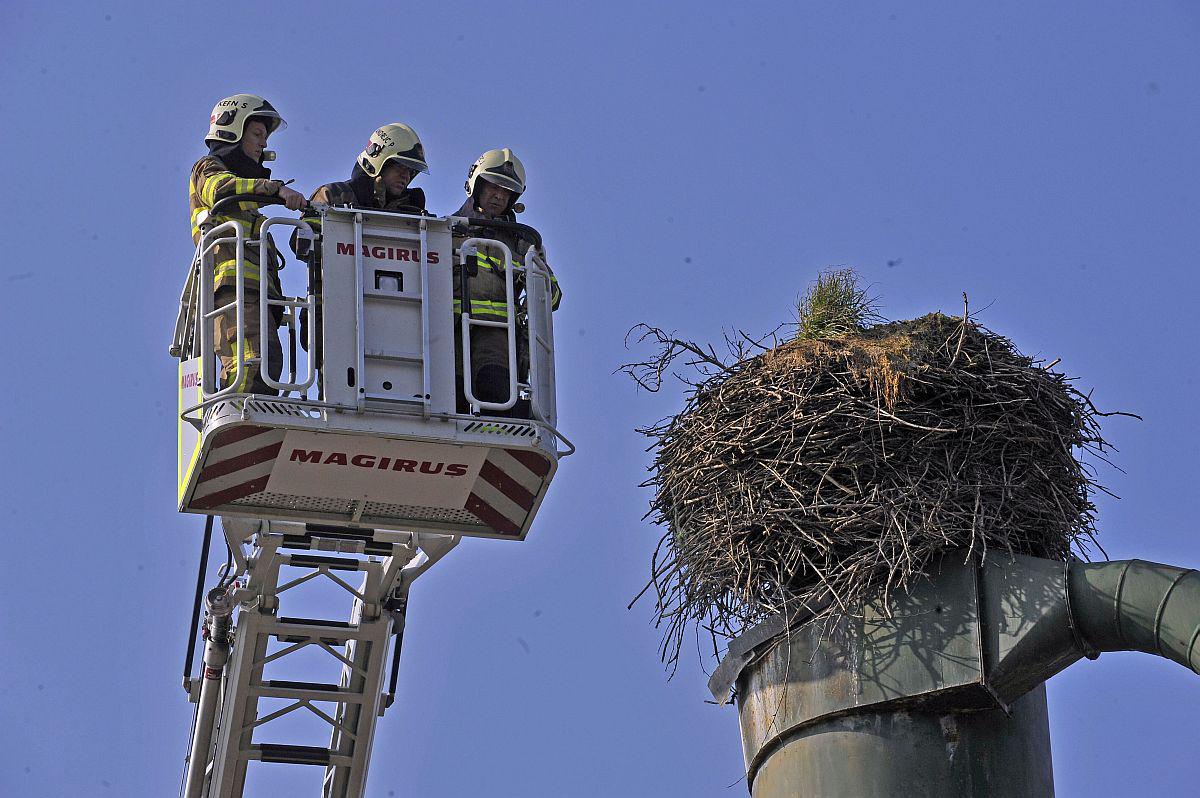
The stork had built its nest at the abandoned sawmill, but the nest started leaning to one side and it was in danger of tipping over and falling to the ground. In order to save the nest. professional firefighters and workers of Elektro Gorenjska set a nesting column onto which the nest was transferred, thus making it safe.
The process took hours. Mateja Nose Marolt from the Institute of the Republic of Slovenia for Nature Conservation explained that eight to ten supports for electric poles are made annually.
More and more storks can be found in the Upper Carniola region
This was the third nesting pole erected in the Upper Carniola region. According to the data gathered by the Bird Watching and Study Association of Slovenia there are 11 other stork's nest in the region, nine of those still active. The white stork population in the region is increasing – the members of the association every year report a sighting of a new nest.
As the population of white storks is rather small, there is not much competition for food, and the nesting in the Upper Carniola region is successful in spite of somewhat worse feeding conditions; the storks in that area mainly feed on meadows, and not on cultivated fields.
The number of white storks has been diminishing in the central- and west-European countries due to the loss of suitable habitat. In Slovenia white storks belong to protected species. Although their existence is endangered because of the lack of food, destruction of meadows, draught and collisions with electric wires, their number is increasing.
T. H., translated by G. K.

































































